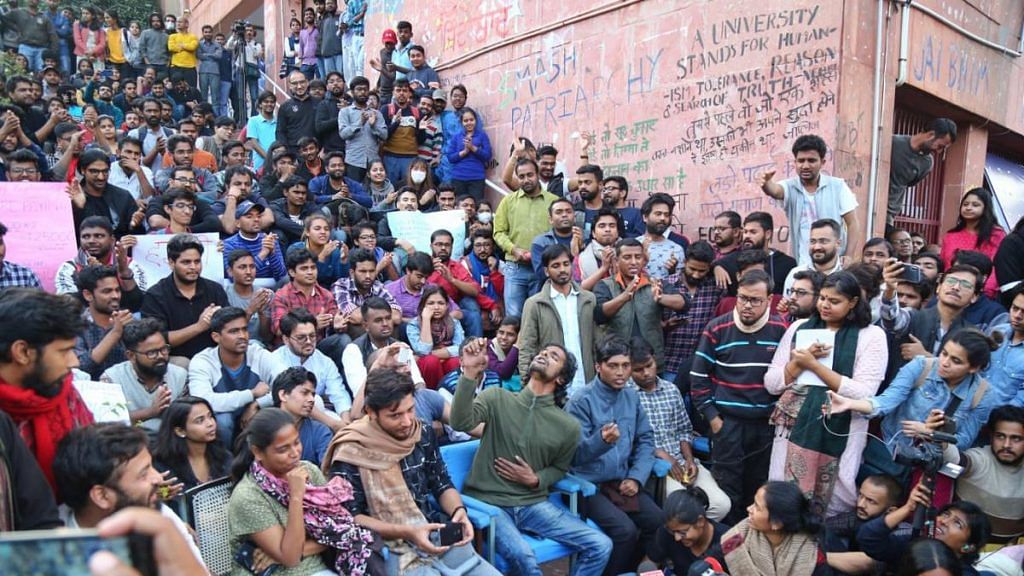When it comes to public institutions of higher education, fee hikes are always a volatile matter, a simmering volcano.
Look at the ongoing Jawaharlal Nehru University protests for instance. The fee hike has raised the ire of students and faculty alike and propelled them onto the streets. The reasons for such sensitivity are not so hard to understand, of course, if you want to understand them.
Given that a significant percentage of the student population in these institutions hails from the lower end of the economic spectrum, a fee hike without recourse to a financial support system does cause hardship. It has also come to be accepted over time that the government must bear the burden of financial support for these universities and colleges. Precisely for these reasons, institutions like JNU tend to handle the issue of fee hikes rather gingerly, if at all.
In fact, the University of Delhi has not raised its tuition fees for several decades. And tuition fees cannot be raised by colleges. But individual colleges have got around this by raising money from students from time to time under different categories like special library facility, sports complex or broadband internet.
And for nearly five decades, the Delhi Transport Corporation could not muster the resolve to raise the monthly fees from a measly Rs 12 for providing unlimited rides to students of Delhi University on their buses. So, it comes as a bit of a surprise that the JNU administration seemingly did not handle the issue with the delicacy and sensitivity that it mandated.
Also read: Forget top 100 list, India doesn’t even have a mechanism to identify research universities
A simmering volcano
I am reminded of my student days at St. Stephen’s College in the 1970s. The Principal at the time had instituted a steep mess fee hike without any consultation with the students. The matter triggered an emergent meeting of the college student’s union. I remember the vehemence and the anger on display at the meeting.
The issue united the day scholars – who were unaffected by the hike – and the resident students. As a result, a call for strike was unanimously approved amidst loud cheers. The depth of the anger amongst the students could be gauged by the fact that this was probably the only time Stephanians had ever gone on a strike in the history of the college. As a consequence, after a week of the students’ strike, the hike was revoked.
Mess charges at St. Stephen’s were not hiked for a very long time after that eventful strike. Many Delhi University colleges have managed to work around such problems by charging fees under other heads, which seem to give something more than classroom learning to students so that they bear such costs up to a point. And here too, I am aware, many subsidies are put in place by these colleges and several agencies including state governments for various categories of students.
Also read: Are JNU students justified in protesting steep but long overdue fee hike?
Finding value in education
There are several layers to the issue of fee hikes.
Publicly funded institutions of higher education do not seem to have in place a differential system of charging fees based on the capacity of the student to pay.
At the same time, I have long held the belief that even if such a rationalised fee system were to be put in place, it would yet leave the account books in the red. Institutions such as Harvard University charge hefty fees. Many students at Harvard University, or at almost every major university in the US, end up taking burdensome loans to pay for their tuition and other costs. The total student debt in the United States is over $1trillion, and yet only 22 per cent of Harvard’s revenues came from tuition fees in 2018. So, how does Harvard University balance its books?
It happens through huge investments from its constantly growing and large corpus fund. This serves as an indication of the value that society at large sees in Harvard University.
The inference that needs to be made is that the business of providing quality education cannot and should not rely on a revenue model based solely on student fees. The unfortunate part is that as the number of our publicly funded universities and colleges rises, governments find themselves stretched more and more.
If at the same time, state revenues falter due to economic slowdowns then it becomes really difficult for the government to provide adequate financial support to universities. I must also add that many of our universities are hopelessly inept at managing their finances.
Also read: How China makes it possible for a German to study ancient Indian math in its university
Donations
This brings us to another aspect of the issue at hand. There seems to be an acute inability on the part of all publicly funded universities to raise significant financial resources from non-governmental sources and agencies.
This is perhaps because Indian society does not see much value in what these institutions provide. It is time that these universities gave deep thought to the need to provide tangible benefits of high value to society outside of producing graduates so that society sees value in supporting them.
Our publicly funded universities must ask why worthy individuals such as Ratan Tata, Indra Nooyi and Narayan Murthy find value in donating significant sums to universities abroad, and not much to our home-grown ones.
The author is the former Vice-Chancellor of the University of Delhi, a distinguished mathematician and an educationist. Views are personal.
